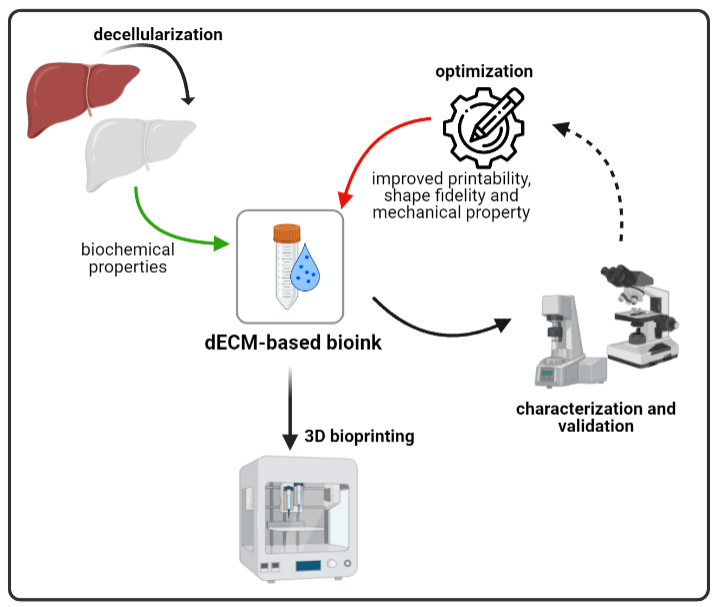3D bioprinting is an emerging technology in tissue engineering to fabricate tissues and organs by precisely positioning cells into 3D structures using printable biomaterials known as hydrogels (or bioinks if cells are embedded inside). Several naturally derived hydrogels (e.g., alginate, gelatin, and fibrin) have been utilized in 3D bioprinting applications; however, they are not able to recapitulate the physiological microenvironment present in native tissues.
In recent years, increasing attention by the research community is addressed towards decellularized extracellular matrix (dECM)-based bioinks, which are conceived as a new class of biomimetic hydrogels for 3D bioprinting. Indeed, since they are derived from native tissues, they possess various ECM components and growth factors that promote survival, proliferation, differentiation, and maturation of cells.
Despite these interesting properties, this kind of bioinks shows drawbacks in terms of 3D printability, shape fidelity, and mechanical properties. As part of her PhD project, Giulia Di Gravina aims to optimize a new dECM-derived hydrogel for extrusion-based bioprinting, focusing attention on liver tissue engineering, and to characterize and validate it from a biological, mechanical, and rheological point of view.
The project is carried out in collaboration with Prof. Lorenzo Cobianchi and Dr. Stefania Croce (IRCCS Policlinico San Matteo Pavia) and the group of Prof. Marina Torre (Department of Drug Sciences, University of Pavia).

Fig. 1: Flowchart for the obtainment of an optimized dECM-based bioink.
April 23rd, 2021

